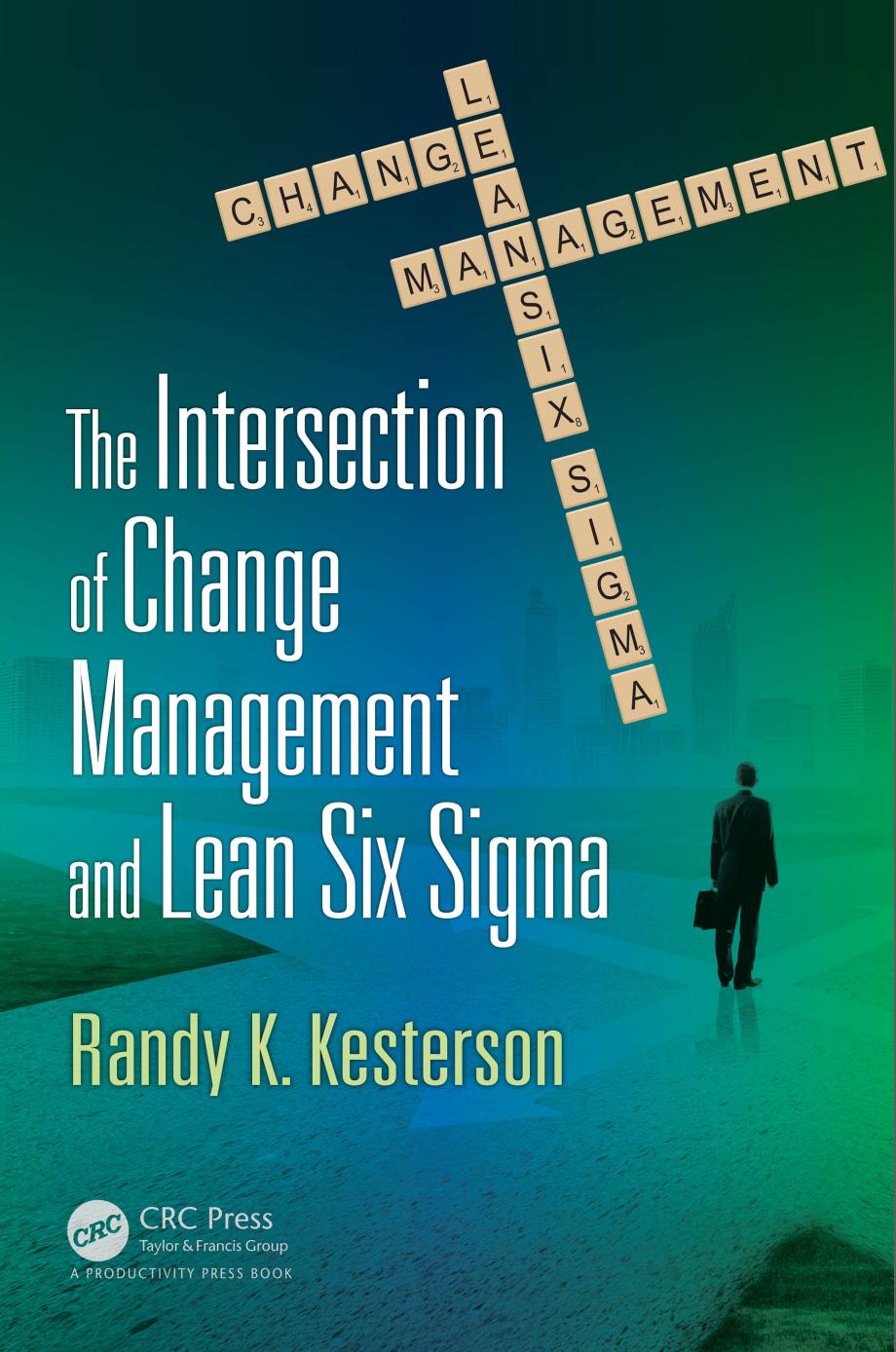The Intersection of Change Management and Lean Six Sigma: The Basics for Black Belts and Change Agents by Randy K. Kesterson

Author:Randy K. Kesterson [Kesterson, Randy K.]
Language: eng
Format: azw3, pdf
Publisher: Taylor and Francis
Published: 2017-08-31T16:00:00+00:00
How to use the basic tools to “grease the skids” for project success
Some basic classroom training
Learning mostly on the job with a mentor or coach
Sarah Carleton: BBs must be prepared to recognize, identify, understand, respect, and deal with aspects of change that affect their projects. CM should be taught as an integral aspect of every phase of the Lean Six Sigma methodology.
Roxanne Britland: I think they should be certified in a change management methodology. There are programs available. I don’t believe CM is a PowerPoint set of slides that has been handed down, company by company, MBB by MBB. It is a religiously practiced method and approach, project by project. There needs to be a change management plan. It’s not something you get from PowerPoint slides. It is a trained, and then an applied and practiced, method of introduction. I also don’t believe that it’s a stand-alone activity. I’m not too sure I really understand organizations that say, “I’m going to go buy change management.” All of a sudden, they’re training a lot of people and sending people to seminars. There really have to be applications and related activities. There has to be a real change, a real solution that’s being developed using an applied method for managing change.
Darryl Bonadio: We use what we call mindsets and behaviors. What we teach is that there is a human side to all changes, and if you do not address the needs and feelings of the employees, you will not get your improvement to be sustained.
Don Linsenmann: Influence skills… Communication skills… Stakeholder analysis… Process model. Taught at BB training.
Bob Von Der Linn: Every BB should have training in organizational behavior and change management, and then should be given hands-on experience facilitating change management tools.
Every BB should understand that to sustain a change (control), you must realign the business systems and structures with the desired end-state. If you do not update your measurement and reward systems, hiring and staffing systems, training and development systems, etc., those systems will push you back to the old way—that’s what they are designed to do.
Marc Zaban Fogel: All belts should be taught the need to incorporate stakeholder needs into their thinking and planning. It can be most simply done as stakeholder analysis and communications planning but needs to be emphasized as an analysis tool to target barriers before they come up. It should be brought up at the beginning of a project and discussed actively when the FMEA concept is taught as a tool.
Beth Cudney: How to effectively communicate change in terms of what is important to each individual. They must understand individuals’ potential fears and what’s in it for each individual. It should be taught consecutively with each tool in the Lean Six Sigma program.
Currin Cooper: Implementing a new process without understanding the impacts or unintended consequences is risky. Very few lines of business or business units actually do work in a silo. Organizations are systems and processes are cross-functional. Politics are real. You can’t influence what you don’t understand, and you can’t understand that of which you aren’t aware.
Download
The Intersection of Change Management and Lean Six Sigma: The Basics for Black Belts and Change Agents by Randy K. Kesterson.pdf
This site does not store any files on its server. We only index and link to content provided by other sites. Please contact the content providers to delete copyright contents if any and email us, we'll remove relevant links or contents immediately.
| Agile | Lean |
| Quality Control | Six Sigma |
| Total Quality Management |
Hit Refresh by Satya Nadella(8822)
The Compound Effect by Darren Hardy(8443)
Change Your Questions, Change Your Life by Marilee Adams(7324)
Nudge - Improving Decisions about Health, Wealth, and Happiness by Thaler Sunstein(7199)
The Black Swan by Nassim Nicholas Taleb(6725)
Deep Work by Cal Newport(6492)
Daring Greatly by Brene Brown(6193)
Rich Dad Poor Dad by Robert T. Kiyosaki(6114)
Principles: Life and Work by Ray Dalio(5876)
Man-made Catastrophes and Risk Information Concealment by Dmitry Chernov & Didier Sornette(5597)
Digital Minimalism by Cal Newport;(5328)
Playing to Win_ How Strategy Really Works by A.G. Lafley & Roger L. Martin(5322)
Big Magic: Creative Living Beyond Fear by Elizabeth Gilbert(5306)
The Myth of the Strong Leader by Archie Brown(5206)
The Slight Edge by Jeff Olson(5176)
Discipline Equals Freedom by Jocko Willink(5136)
The Motivation Myth by Jeff Haden(4967)
Stone's Rules by Roger Stone(4822)
The Laws of Human Nature by Robert Greene(4728)
